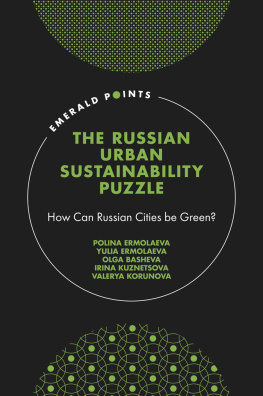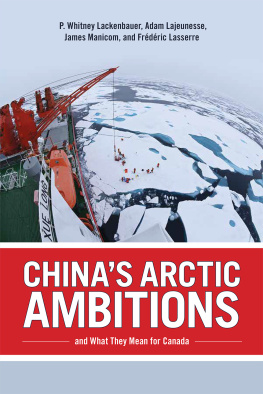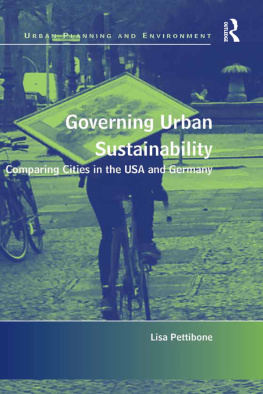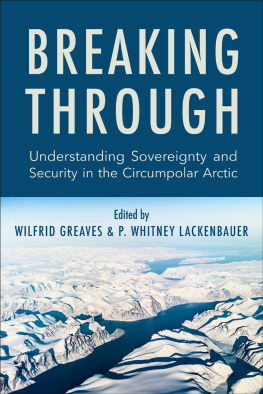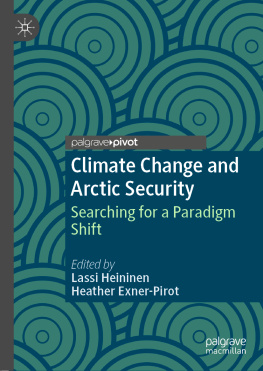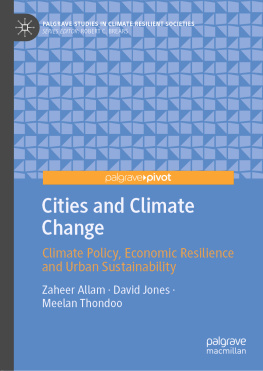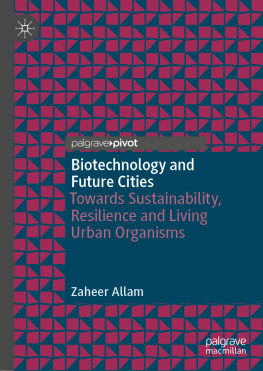URBAN SUSTAINABILITY IN THE ARCTICStudies in the Circumpolar North
Series Editors: Olga Ulturgasheva and Alexander D. King
The Circumpolar North encapsulates all the major issues confronting the world today: enduring colonial legacies for indigenous people and the landscape, climate change and resource extraction industries, international diplomatic tensions, and lived realities of small communities in the interconnected modern world system. This book series provides a showcase for cutting-edge academic research on the lives of Arctic and Sub-arctic communities past and present. Understanding the contemporary Circumpolar North requires a multiplicity of perspectives and we welcome works from the social sciences, humanities, and the arts.
Volume 3
Urban Sustainability in the Arctic: Measuring Progress in Circumpolar Cities
Edited by Robert W. Orttung
Volume 2
Sustaining Russias Arctic Cities: Resource Politics, Migration, and Climate Change
Edited by Robert W. Orttung
Volume 1
Leaving Footprints in the Taiga: Luck, Spirits and Ambivalence among the Siberian Orochen Reindeer Herders and Hunters
Donatas Brandiauskas
Urban Sustainability
in the Arctic
Measuring Progress in Circumpolar Cities
Edited by Robert W. Orttung
First published in 2020 by
Berghahn Books
www.berghahnbooks.com
2020 Robert W. Orttung
All rights reserved. Except for the quotation of short passages for the purposes of criticism and review, no part of this book may be reproduced in any form or by any means, electronic or mechanical, including photocopying, recording, or any information storage and retrieval system now known or to be invented, without written permission of the publisher.
Library of Congress Cataloging-in-Publication Data
Names: Orttung, Robert W., editor.
Title: Urban sustainability in the Arctic : measuring progress in circumpolar cities / [edited by] Robert W. Orttung.
Description: First edition. | New York : Berghahn Books, 2020. | Series: Studies in the circumpolar North; volume 3 | Includes bibliographical references and index.
Identifiers: LCCN 2020009782 (print) | LCCN 2020009783 (ebook) | ISBN 9781789207354 (hardback) | ISBN 9781789207361 (ebook)
Subjects: LCSH: Sustainable urban development--Arctic regions. | Cities and towns--Arctic regions.
Classification: LCC HT243.A68 U73 2020 (print) | LCC HT243.A68 (ebook) | DDC 307.760911/3--dc23
LC record available at https://lccn.loc.gov/2020009782
LC ebook record available at https://lccn.loc.gov/2020009783
British Library Cataloguing in Publication Data
A catalogue record for this book is available from the British Library
ISBN 978-1-78920-735-4 hardback
ISBN 978-1-78920-736-1 ebook
Contents
Illustrations
Figures
Maps
Tables
Preface

The purpose of this book is to advance efforts to measure sustainability in Arctic cities in the circumpolar north. Ultimately, we hope to apply the 128 indicators listed by the International Organization for Standardization (ISO) in its ISO 37120 (Sustainable cities and communitiesIndicators for city services and quality of life) to approximately fifty cities in the Far North. ISO published the first version of the standard in 2014 and a revised version in 2018. We have not succeeded in collecting the 6,500 pieces of data for that analysis yet. The chapters in this book move in that direction by testing how some of the key indicators work in various case study cities. As a stepping-stone to the larger comprehensive analysis, these chapters give in-depth discussions of various aspects of urban sustainabilityfrom energy use to culture-promoting institutionsin a variety of real-world circumstances. These bits and pieces of the larger comprehensive analysis provide a collection of insights designed to illuminate how relevant the international standard for urban sustainability is for cities in the Far North, providing guidance before we apply the 128 indicators to the fifty cities in a comprehensive manner.
We start with the assumption that the ISO standard can apply to the cities of the Far North even if the authors of the standard were not specifically thinking of these cities. However, as the chapters show, the standard often falls short and we identify some places where understanding sustainability in the North requires going beyond the set of indicators included in ISO 37120.
This book is one of the outputs of our Arctic project, which is part of the Partnerships for International Research and Education (PIRE): Promoting Urban Sustainability in the Arctic, which was funded by the National Science Foundation (NSF; Award 1545913). Part of the funding for this work comes from support that the Academy of Finland provided in funding a related project, Promoting Urban Sustainability in the Arctic (no: 299258).
Frequently we refer to this collective enterprise as the Arctic PIRE project. The project, currently funded for a five-year period from 2016 to 2021, is a multidisciplinary, multinational collaboration based at the George Washington University. US partners include the University of Virginia, the Massachusetts Institute of Technology, the University of Northern Iowa, and the University of Alaska. International partners include the University of Helsinki, Moscow State University, the State Hydrological Institute in Saint Petersburg, and the Norwegian Institute for International Affairs. Disciplinary specialists involved represent the fields of political science, physical and human geography, sociology, economics, architecture, urban planning, and climatology. We have also made a strong effort to incorporate young faculty as well as both graduate and undergraduate students into the project in order to provide some hands-on training to the next generation of natural and social scientists. Similarly, where possible we have reached out to policymakers in an effort to gain a better understanding of their concerns and find ways that our research can address important issues.
The central research task is gathering the data to measure the 128 indicators for the fifty cities. That is an ongoing process and the first set of results are described here. As this book shows, we are trying to combine a robust quantitative analysis with a variety of case studies, interviews, and research trips to put the numerical data in the context of lived reality. Other elements of the project include outreach to K12 students as part of a project called #60above60 that gives students in various northern and nonnorthern locations an opportunity to share sixty-second videos about their cities and how they would go about addressing local sustainability issues. We conducted two summer field trips, one in 2017 and one in 2019, visiting the cities of Salekhard and Vorkuta in Russia, Anchorage and Fairbanks in Alaska, and Whitehorse in Canada, with a group of faculty and students. Project participants have also worked with the Fairbanks Sustainability Commission to help develop both a sustainability plan and improved communication to encourage progress in the areas of food security, energy efficiency, and solid waste management.







